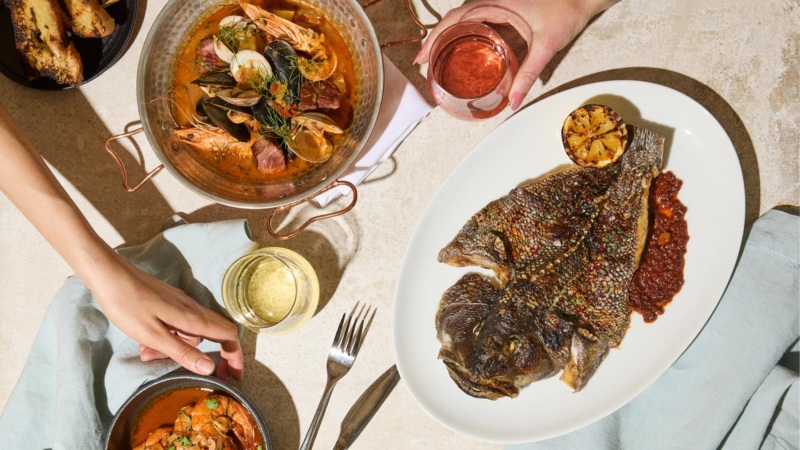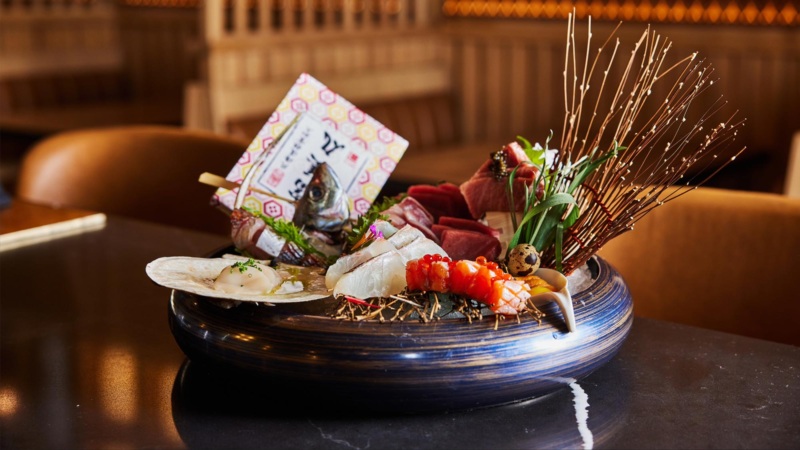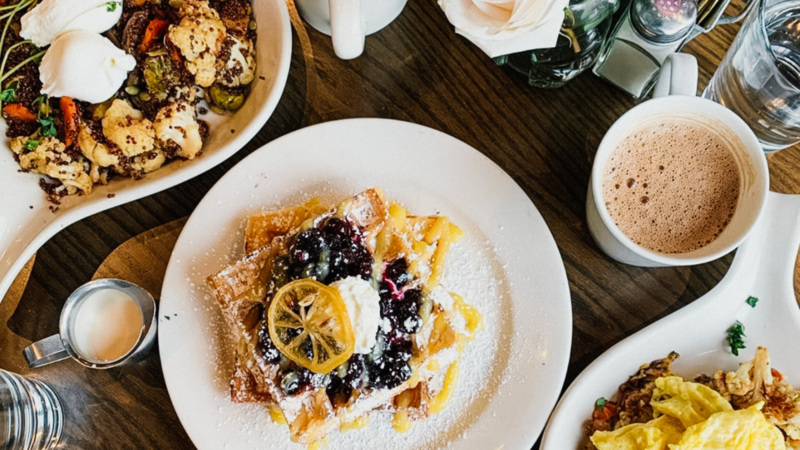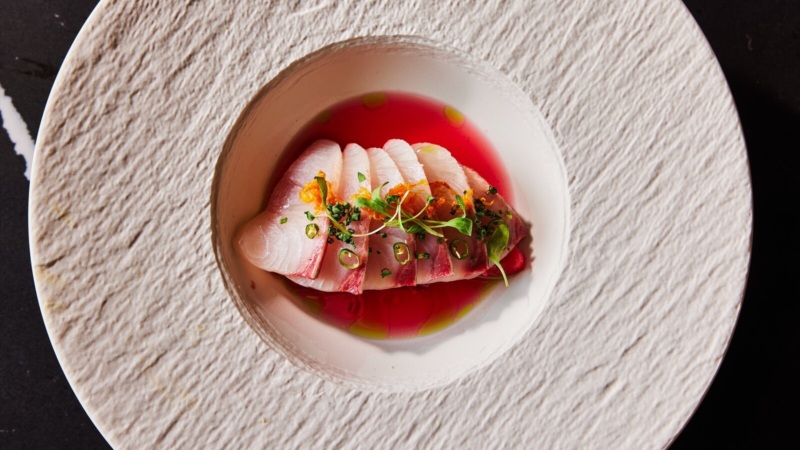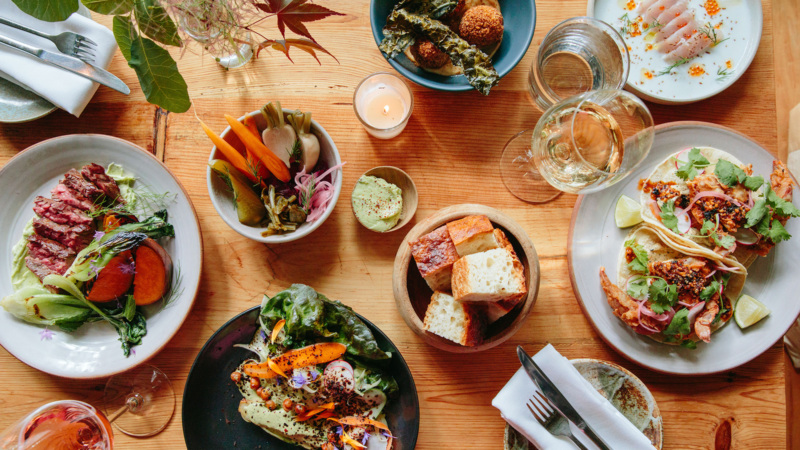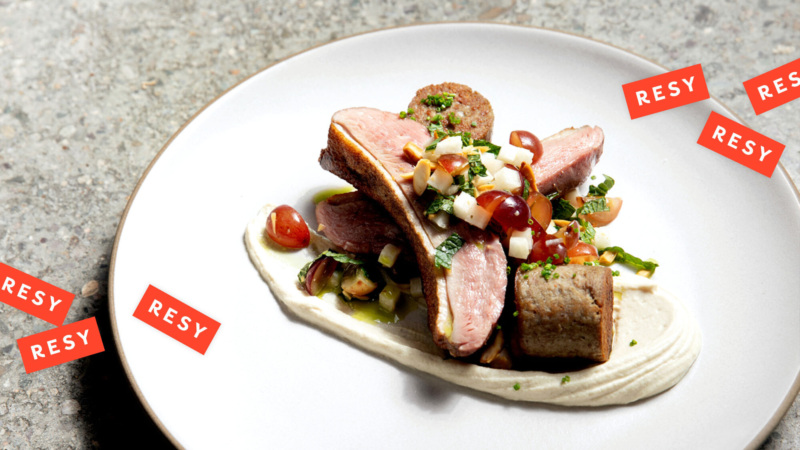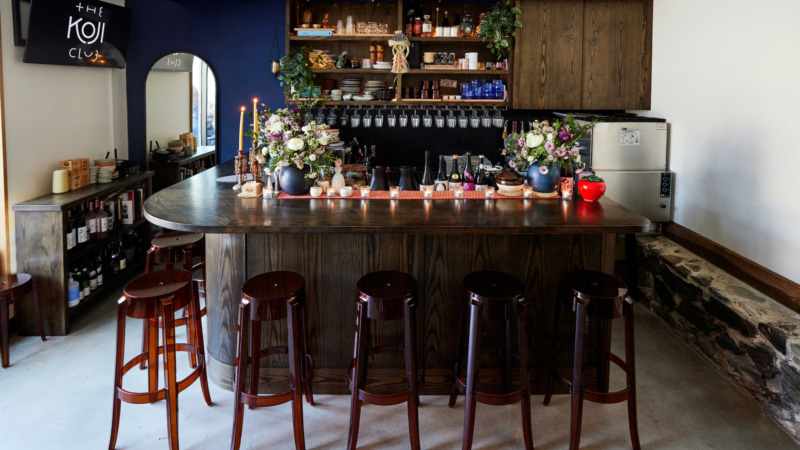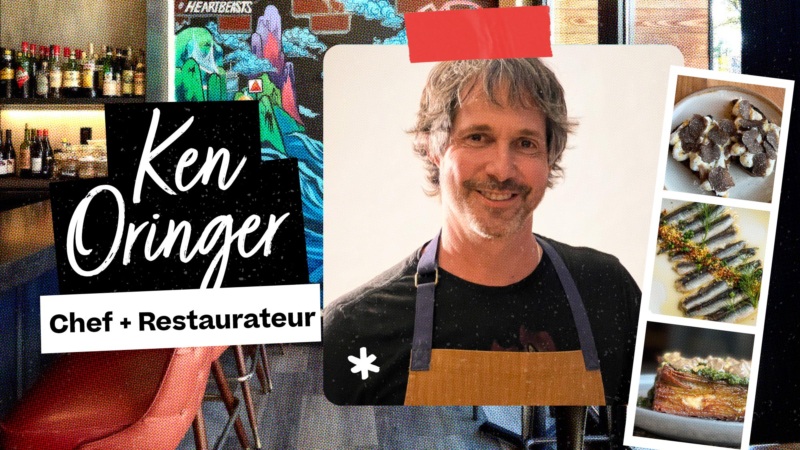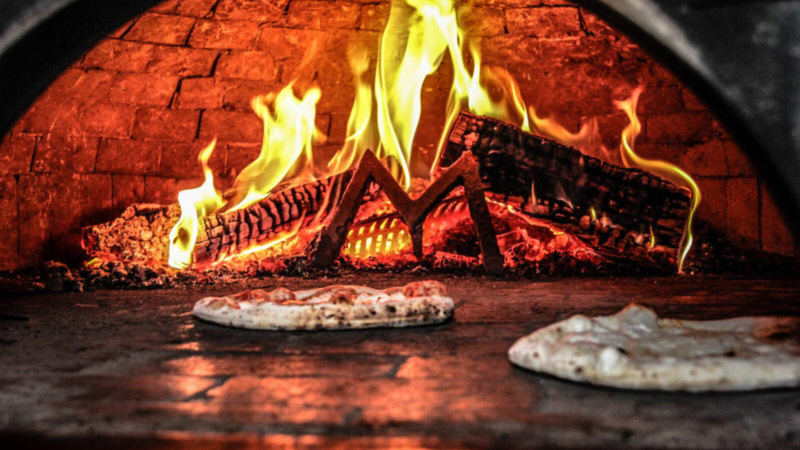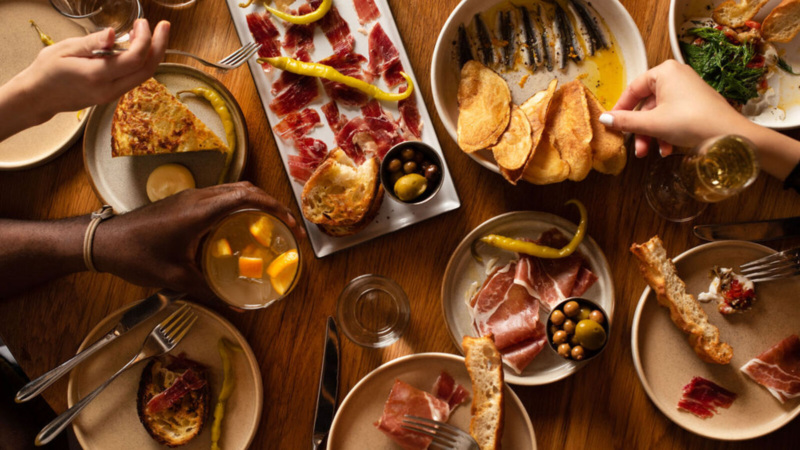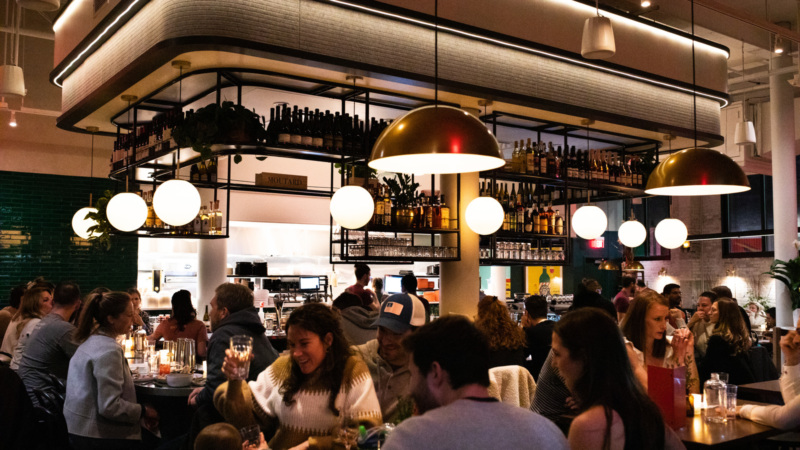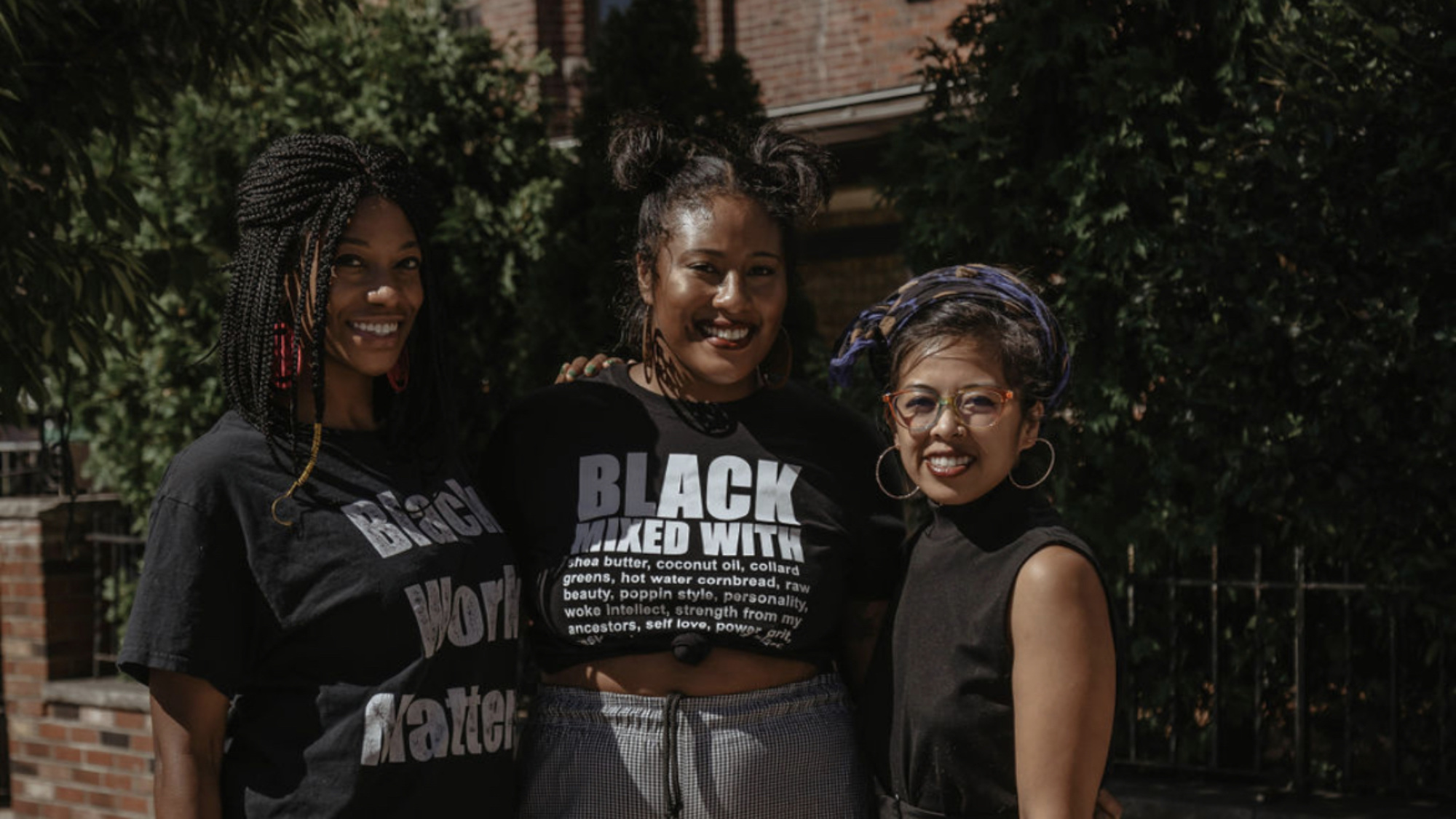
How Afro-Tiki Is Reclaiming Tiki Culture for the Next Generation
At the end of last year, some Boston revelers ringing in 2021 toasted with takeout cocktails they’ve likely never tasted before. One was laced with clarified eggnog. Another, an edible riff on Florida Water, the citrus-scented cologne known for its cleansing, spiritual properties. Yet another was an homage to a rediscovered tiki classic, The Saturn, featuring gin instead of the ubiquitous rum.
Each of these drinks from Boston’s Tanám, a restaurant cooperative focused on Filipinx and Black American cuisine, represents an evolution in modern tiki cocktails, fusing together ingredients in new, delicious ways beyond the standard Mai Tai or Jungle Bird. But more than that, they’re part of a new cocktail guard symbolically reimagining tiki’s problematic past in the hopes of pushing it forward for the future.
The eggnog references Cato Alexander, the formerly enslaved Black bar owner of Cato’s on New York City’s Second Avenue in the early 1800s, whose eggnog was renowned. Florida Water, with its ties to Hoodoo, plays on the mysticism and mystery that laid the foundation for tiki mythology. The Saturn was the creation of Filipinx tiki master J. Popo Galsini. Galsini won the International Bartender’s Association World Championship in 1967 with The Saturn, but for nearly 30 years thereafter, the recipe, and his contributions to tiki had been lost, until Jeff “Beachbum” Berry, a tiki historian and owner of Latitude 29 in New Orleans, rediscovered it.
At Tanám, worker-owners Kyisha Davenport, Sāsha Coleman, and Ellie Tiglao are making it their mission to rewrite tiki’s next chapter, infusing their tiki drinks with deeper meanings and stories for guests to discover. They’re even giving it a name: Afro-Tiki.
Afro-Tiki, Davenport says, intentionally centers Black and Brown voices, many of whom were previously marginalized or forgotten for their contributions. The term reclaims “tiki” for Black and Brown people, and it emphasizes ownership: over who gets credit, who gets to tell the stories, and who owns the bar or the restaurant. “It’s a general rejection of the exploitation of marginalized identities, acknowledging the oppression and violence that’s supported — physically, culturally, financially — and built tiki as a culture for people to enjoy,” she says.
Tiki history has been well documented, from its rise from the 1930s through the 1960s, to its subsequent fall as lowbrow kitsch, and to its recent revival, thanks to craft cocktail culture. More recently, it has come under widespread criticism for being culturally appropriative and exploitative of Caribbean, Polynesian, and Asian cultures. (Its earliest figures, including founding fathers Donn Beach and “Trader Vic” Bergeron, Jr., were mostly white and mostly male.)
While there’s certainly more diversity in tiki culture now, in terms of ingredients and styles and among those who actively participate in it, tiki is still reckoning with its problematic past, nearly a century later.
“We want to make clear that this culture does not exist without sugar, and sugar does not exist without the enslavement of Black people,” Davenport says, referencing the Caribbean sugar and rum trades. “In my personal experience as a bartender, up until about this year, the expectation that someone who looks like us would be the brains behind something delicious often surprised people.” Davenport, Tanám’s bar director, and Coleman, Tanám’s chef and kitchen manager, are both Black. Tiglao is Filipinx American.


This is why tiki’s next generation is attempting to reimagine what it could, or should, be going forward, within the context of their own cultures.
And they want to recognize the work of the previous generation of tiki masters, many of whom heavily influenced tiki cocktail culture from the 1950s and even up to today: Black Caribbean bartenders like Jamaica’s Jasper LeFranc, who invented the Jasper’s Jamaican at the Bay Roc Hotel in Montego Bay. Or Weston Huggins, the longtime head bartender at The Buccaneer in St. Croix, who just retired a few years ago. And Joseph César, the head bartender of Haiti’s Hotel Oloffson in the 1970s, who was known for his César’s Punch.
And then there are the immeasurable contributions of Filipinx tiki bartenders like Galsini; Ray Buhen, the owner and founder of Tiki-Ti in Los Angeles, who broke the color barrier in the 1950s by becoming a front-of-house bartender instead of remaining hidden in the back bar at Beverly Hills’ The Luau restaurant (Today, Tiki-Ti is run by his son, Mike Buhen Sr.); and Mariano Licudine, who was renowned for his work at Don the Beachcomber in Chicago, and then garnered further fame at Fort Lauderdale’s Mai-Kai from 1956 to 1979.
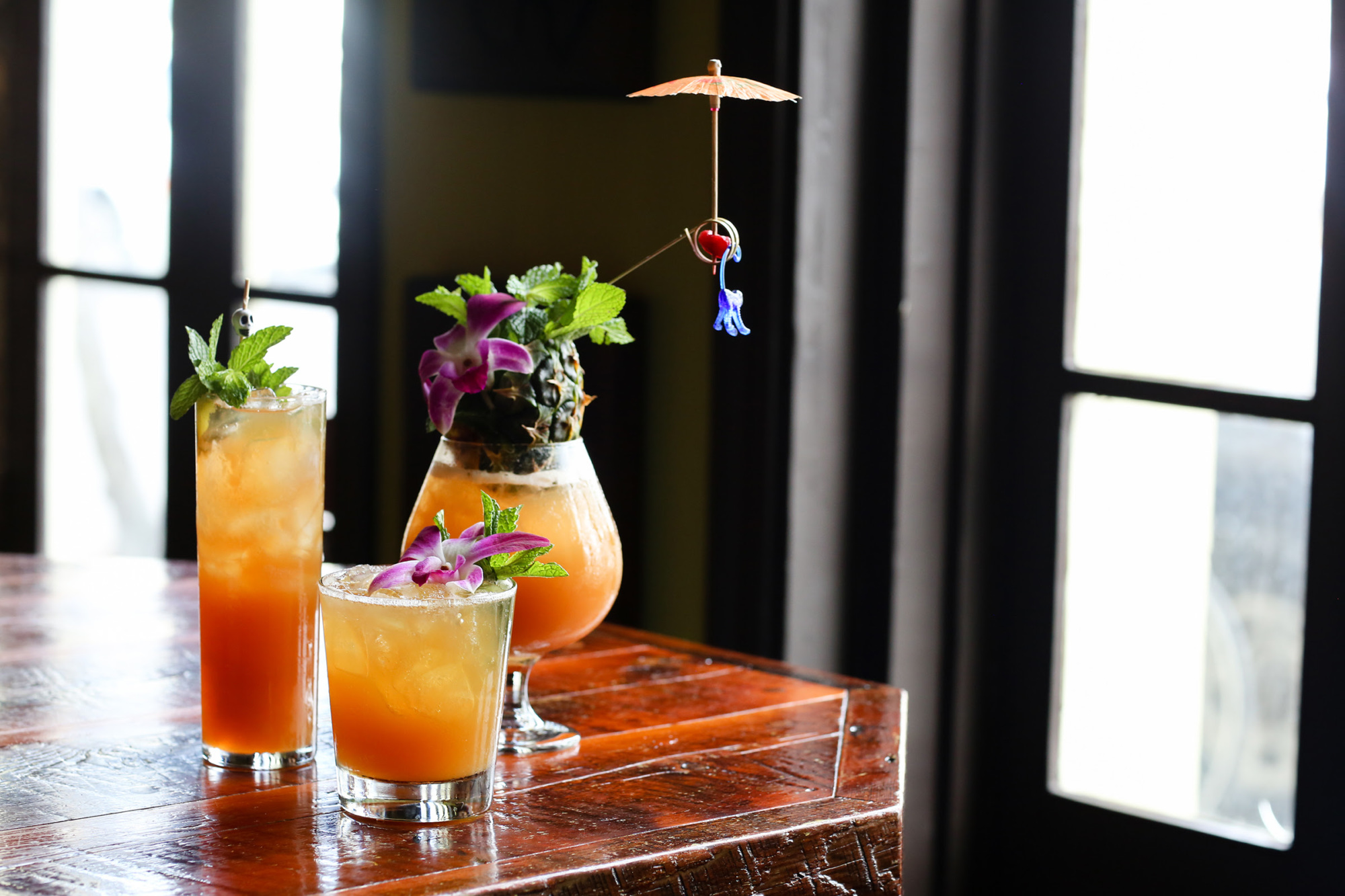
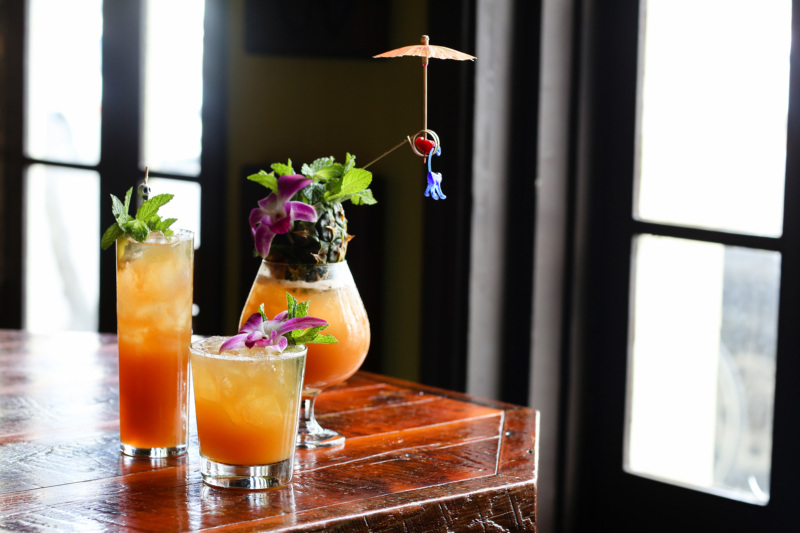
Today’s Black and Filipinx bar directors and owners are, in some ways, doing what Beach, Bergeron, Galsini, and others did before them. They’re taking classic drinks and making them all their own, infusing them with their own cultural and personal perspectives. They’re making sure tiki stays alive for the next 90 years and beyond.
“If tiki is going to continue to have this moment, who actually gets to tell the stories of where these ingredients come from?” Tanám’s Davenport asks. “Who actually does the work behind the scenes? Do we have to continue to be behind the scenes? Or can we actually be at the forefront of what is effectively, you know, the things that came from our people and our lands?”
Nicole Ponseca has been a pioneer in pushing tiki culture forward for the past decade at her New York City restaurants, Jeepney, the now-closed Maharlika, and the soon-to-open Miami outposts of Jeepney and Tita Baby’s. She credits talented Filipinx bar directors like Marlo Gamora, Enzo Lim, and Tomas De Los Reyes, among others, for creating cocktail programs that told Filipinx-driven story lines. “You were not just drinking a cocktail for good measure,” she says. “There was a part of history, a story to tell, with each drink.”
“And it’s even more exciting to see Brown and Black folks get their day as arbiters of style and vision — that’s where the power comes from,” she says. “This isn’t just a trend.”
Jeepney’s Galleon Trade, a drink made with Ming River Banjui, bourbon, sherry, and curry powder, refers to Spain’s colonization of the Philippines, when their galleons would sail between Manila and Acapulco in the 1600s. Another cocktail, named for transgender model and LGBTQ+ activist Geena Rocero, changes every year; it’s now in its sixth iteration. “It was in a beautiful Hurricane [glass], to evoke the curves of a woman,” Ponseca says.
Over the years, she has loved seeing diners ask for the stories behind the drinks. “That’s the point,” she says. “We’ve always wanted to create a restaurant that was more than just a place to eat and drink; it was always educational and political.”
“I love the idea of tiki itself being more open to interpretation, and not necessarily being limited to cocktails that these white dudes made famous from the Caribbean and Polynesia,” says French Scott Marshall, one of the founders of the multi-city and now virtual pop-up, Tiki & Slow Jams. He and his fellow co-founders, Devin Kennedy and Channing Centeno, started the pop-up as a way to make tiki more accessible and inclusive by showcasing Black and Brown talent, both in bartending and in their choice of music, especially Afro-Caribbean beats.
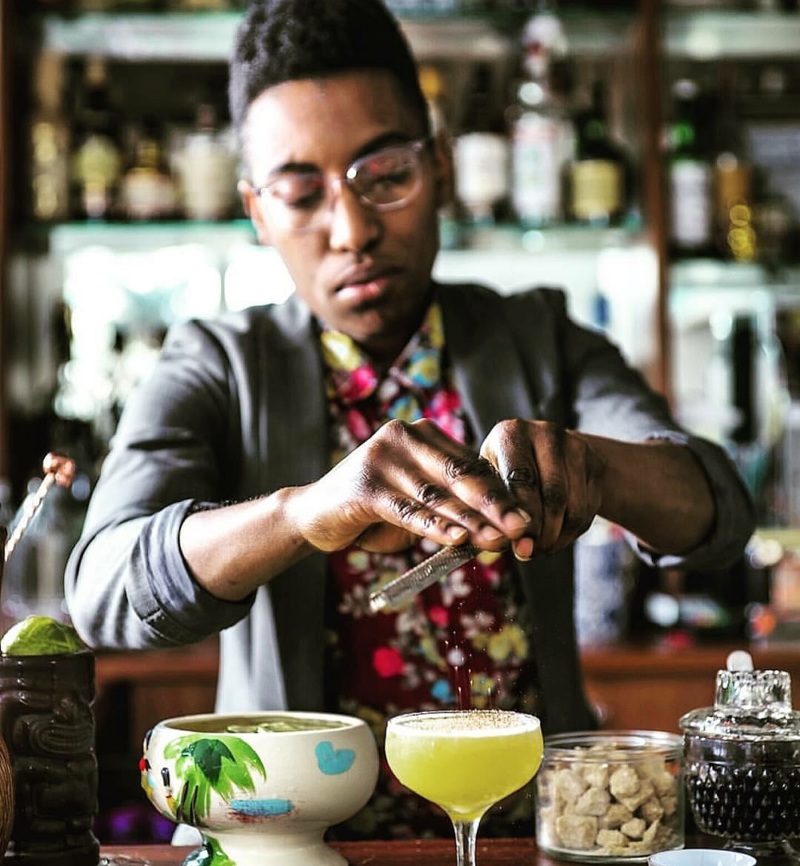

When Shannon Mustipher’s book, “Tiki: Modern Tropical Cocktails,” was published in 2019 it became the first cocktail recipe book written by a Black bartender to be released from a major publisher in more than 100 years, since Tom Bullock’s “The Ideal Bartender” in 1917: a fact she uncovered while she conducting research for her book.
While Mustipher acknowledges the history of discrimination faced by Black bartenders throughout history, she is reluctant to focus on the racial and political histories associated with tiki. “I’m not into identity politics,” she says. “I’m into the merit of the work, the product, the innovation.” Her interests in reinventing tiki and pushing it forward relate more to diversifying the breadth of ingredients and styles that we can use in today’s tiki drinks. Most of all, she just wants people to have a wonderful experience.
Afro-Tiki forces us to confront some hard truths, but it’s ultimately optimistic and celebratory. “We can do both, we can still honor this past and talk about it and celebrate, where we’re at and where we’re going,” Tiglao says. “And see the good, even when things aren’t so great.”
For Tanám’s New Year’s Eve meal, Coleman presented a play on the Chinese American pupu platter, reenvisioned as the FuFu platter: From Us, For Us. It featured short ribs glazed with pineapple and Chinese hawthorn berry fruit, headcheese squares with cornbread crisps, and a coconut sticky rice stuffed duck breast, and much more. “It’s not going to be anything you’ve seen before, but it’s all going to be so familiar,” Coleman promised. “We just want you to have a party.”
And that’s exactly what tiki’s aim has been all along: It has always been a multicultural, multifaceted, tropical state of mind that takes us away from what might be troubling us. A mini vacation, so to speak.
And in a year like 2020, as we look ahead to a brighter 2021, it’s clear we could all use one — without forgetting just how far we’ve come, and where we need to go, too.
Deanna Ting is a Resy staff writer. Follow her on Instagram and Twitter. Follow Resy, too.

